Terra Nitrogen Co LP
Latest Terra Nitrogen Co LP News and Updates
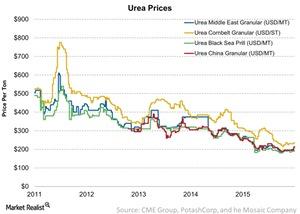
Did Capacity Shutdowns in China Impact Urea Prices?
For the week ending October 28, the overall movement in urea prices was flat to positive. Granular urea prices rose 6.6% to $211 per metric ton in China.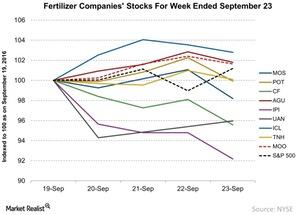
How Did Fertilizer Stocks Perform in the Week Ended September 23?
Last week was mostly negative for agricultural fertilizer (FXZ) stocks. However, the VanEck Vectors Agribusiness ETF (MOO) ended the week in positive territory.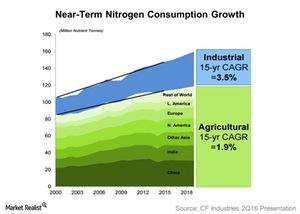
How Much Demand Will There Be for Nitrogen in the Near Term?
According to CF Industries, nitrogen prices could remain under pressure as new capacities come online in 2017. However, the company believes that things should improve in 2018.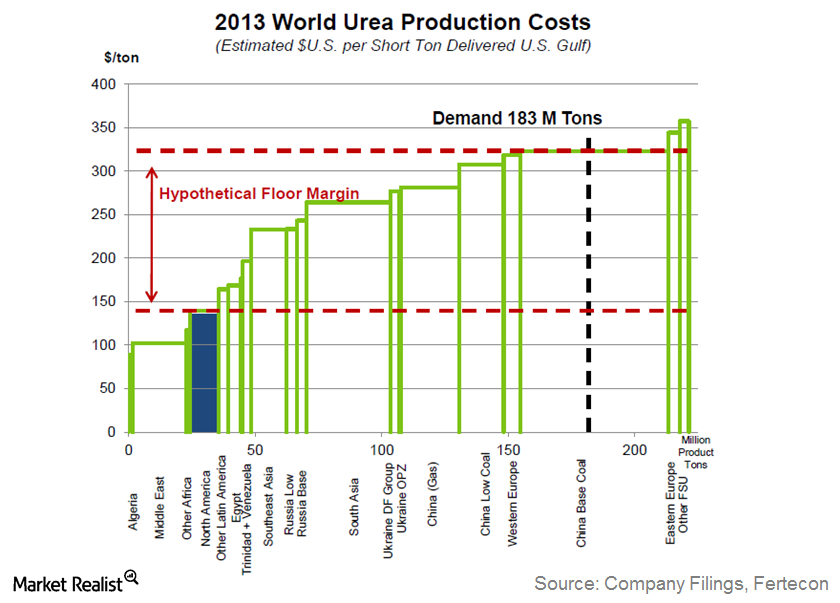
Why industry capacity changes also affect urea prices and profits
Generally, a capacity increase tends to lag demand growth, as producers like to see a stronger market before making significant investments.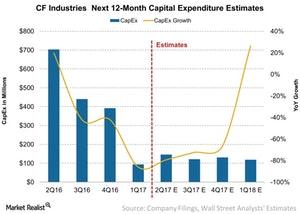
Capital Expenditure Expectations for CF Industries in 2Q17
CF Industries (CF) is expected to see a significant reduction in its capital expenditure (or capex) year-over-year (or YoY) in 2Q17 and for the next four quarters.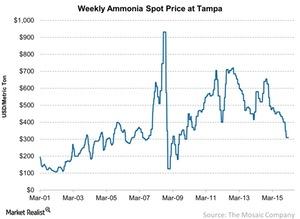
Why Ammonia Prices Will Benefit Phosphate Producers
The average price of ammonia for the week ending March 11 stood at $310 per metric ton, remaining unchanged from the previous week.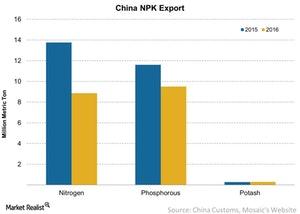
How China’s Fertilizer Export Sector Is Changing
China is the largest consumer of nitrogen fertilizers, but it produces most of it within its borders. Urea is Chinese farmers’ top choice.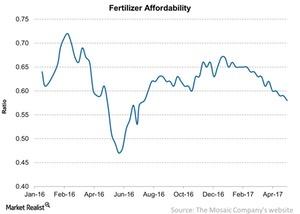
Fertilizer Affordability Fell for the Week Ending April 28
For the week ending April 28, the Fertilizer Affordability Index fell slightly to 0.58x—compared to 0.59x the previous week.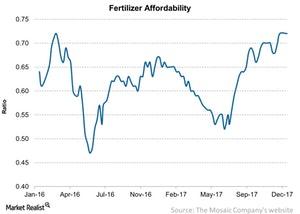
Are Rising Prices Affecting Fertilizer Affordability?
Recently, the Fertilizer Affordability Index has seen an upward trend.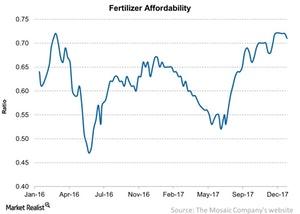
Fertilizer Affordability Remains Stable amid Strengthening Prices
Fertilizer affordability has seen some tightening in the last couple of months.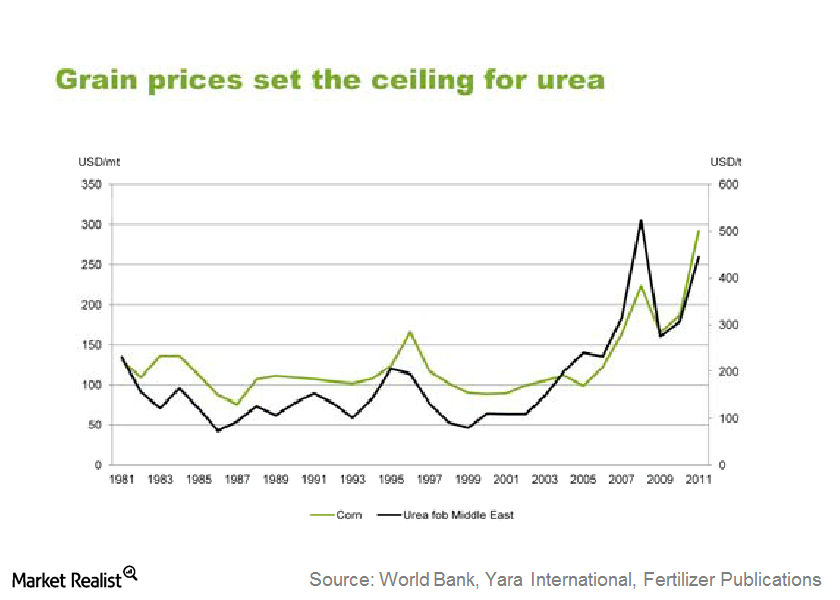
2 key things that set the floor and ceiling for urea prices
Without an understanding of factors that affect crop prices, it would be difficult to formulate a view on future crop prices and demand for nitrogenous fertilizers.
Who Are the Biggest Players in the Fertilizer Industry?
There’s a handful of big players in the agricultural fertilizer industry. Setting up business requires huge capital, which makes for a high barrier to entry.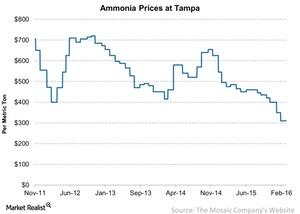
Why Ammonia Prices Are Falling
The average price of ammonia for the week ending March 4, 2016, stood at $310 per metric ton compared to $311 per metric ton a week ago.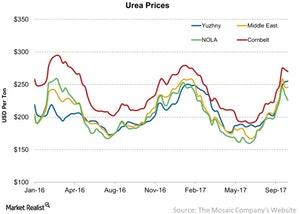
Urea Prices Continued to Rise in the Week Ending October 13
On average, granular urea prices were flat to positive week-over-week. In NOLA (New Orleans), granular urea prices rose as much as 3.5% week-over-week.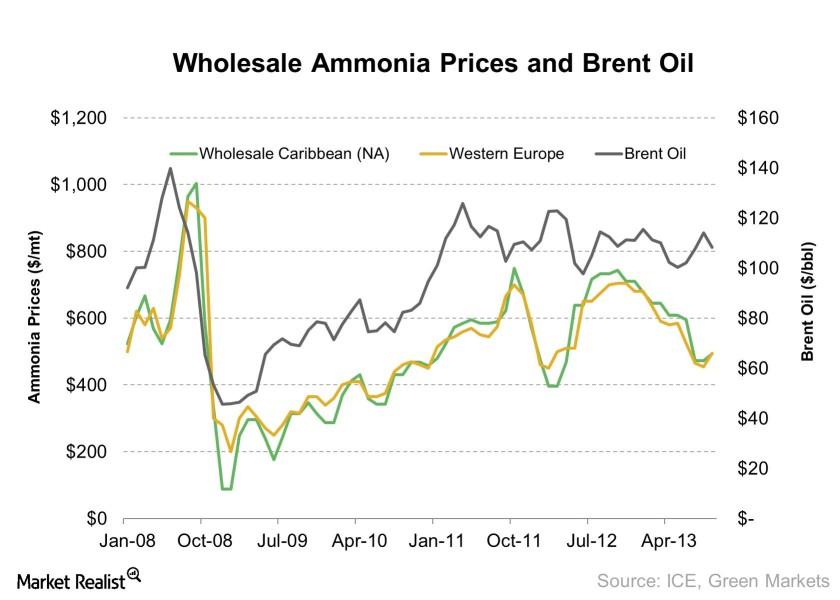
Essential fertilizer trends: The importance of Brent oil prices
Why oil affects fertilizer price In a competitive industry like nitrogenous fertilizer, the marginal producer’s cost sets the floor for the industry. These producers are the most expensive manufacturers to supply the product at that point in time. When the marginal producer’s cost rises, so does the industry’s. On the the other hand, falling costs […]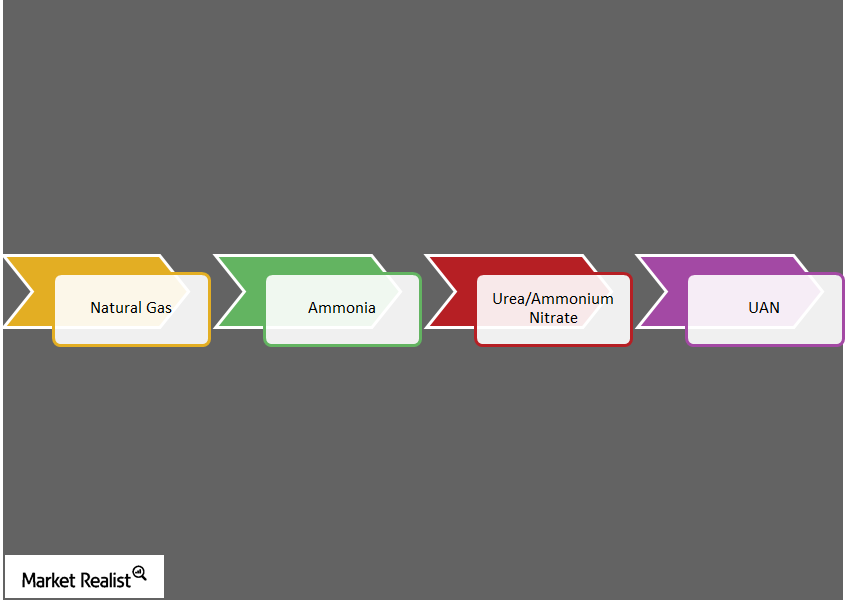
Key inputs and processes of nitrogenous fertilizer production
The importance of costs Understanding how fertilizers are produced is an important part of investing. What companies buy and what they pay for will be their costs. When costs are rising, they can have a negative impact on earnings and cash flow if the industry can’t pass them on to buyers. Conversely, when costs are falling, […]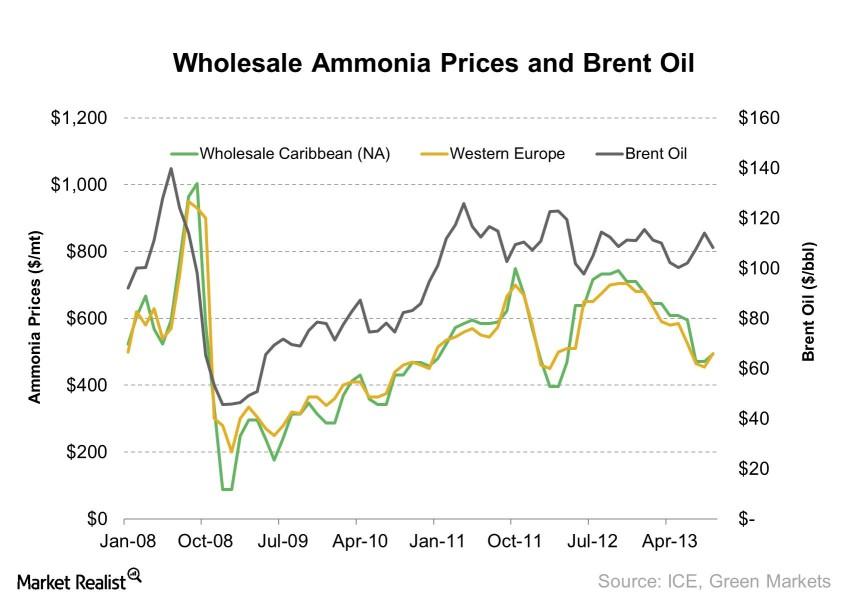
The relationship between ammonia and Brent oil hasn’t returned
In a competitive industry like the nitrogenous fertilizer industry, the marginal producer’s cost sets the industry floor.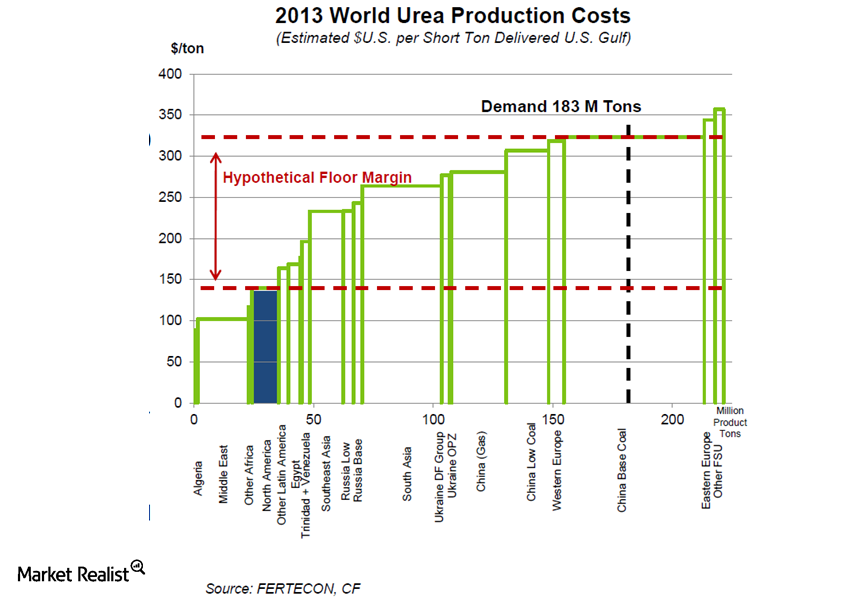
Why Chinese producers are driving nitrogenous fertilizer prices down (Part 1)
How China affects the global fertilizer market China, the world’s largest producer of nitrogen (a chemical used to make nitrogenous fertilizers for growing plants) occupies roughly 40% of global production capacity. Although much of its output is sold to domestic farmers—as an export tax of as much as 75% during the on-season restricts domestic firms […]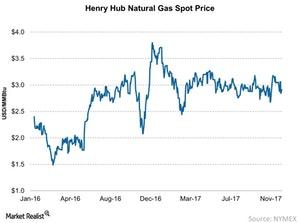
Natural Gas Prices for Fertilizer: Week Ended December 8
According to the EIA (U.S Energy Information Administration), natural gas prices were broadly mixed from November 29 to December 6, 2017.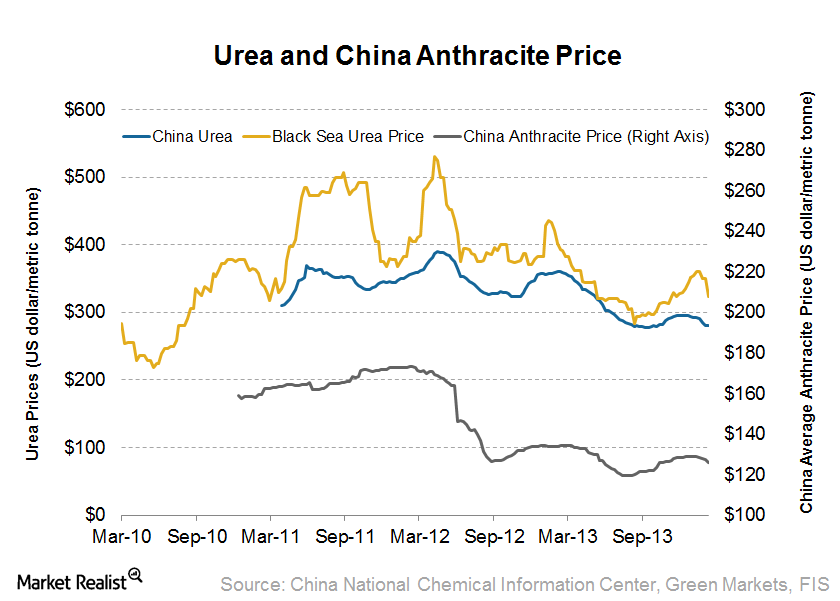
Why coal prices affect global urea fertilizer producers like CF
This series covers key trends that are currently affecting coal and natural gas prices and, consequently, nitrogen fertilizer producers as well.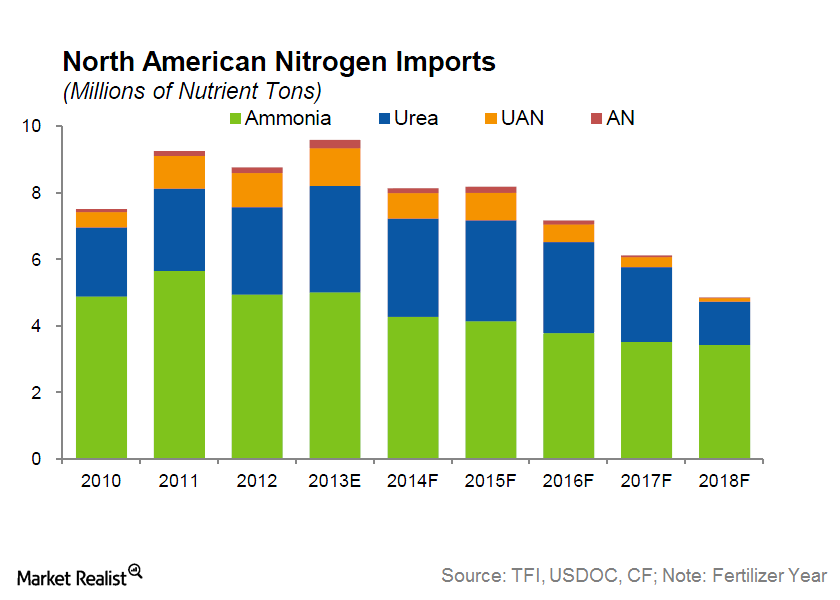
Must-know: Why US fertilizer companies offer a key advantage
The United States is one of the largest producers of agricultural products in the world, but it’s not a key producer of nitrogen fertilizers.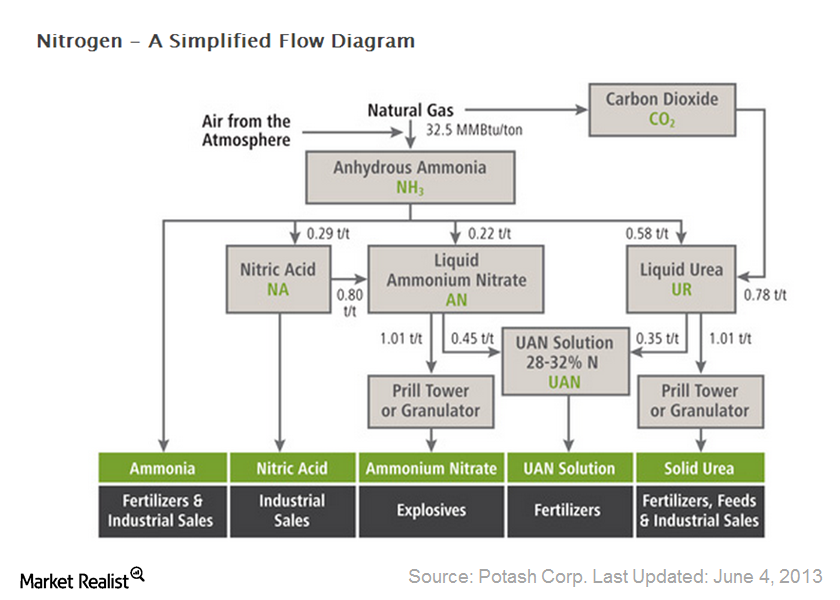
An investor’s guide to nitrogen fertilizers: Key 2014 drivers
Nitrogen is an important nutrient for crop development and growth. It’s also the most important input that allows farmers to feed billions of people in the world.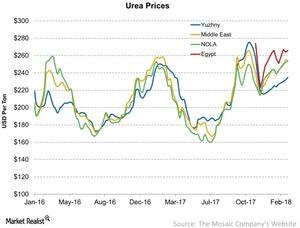
Urea Prices Rose Last Week
Urea prices for the standard grade in the NOLA (New Orleans) region of the US and in Egypt saw the steepest weekly change last week.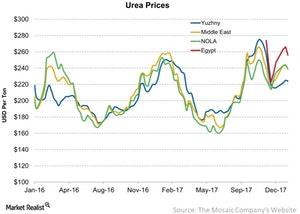
Urea Prices Fell Last Week
Nitrogen fertilizer prices remained volatile on the back of the volatility in the input prices of natural gas.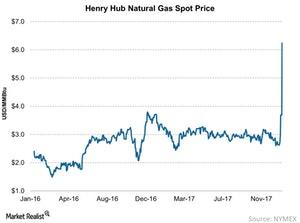
Why Natural Gas Rose Sharply Last Week
Natural gas is one of the key input components for gas-based nitrogen fertilizer producers (MOO)(MXI) such as CF Industries (CF), Terra Nitrogen (TNH), CVR Partners (UAN), and Nutrien (NTR).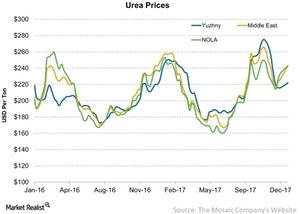
Urea Prices Saw Good Start to 2018
In the week ending January 5, the prices for granular as well as prilled urea were broadly higher week-over-week.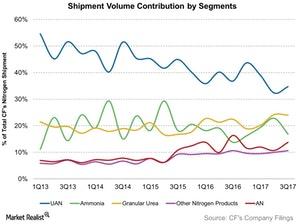
Assessing the Shift in CF Industries’ Product Mix
In the earlier part of this series, we discussed how shipments impacted CF Industries’ (CF) sales. From our analysis, it’s clear that a rise in selling prices remains the most important growth catalyst for the company.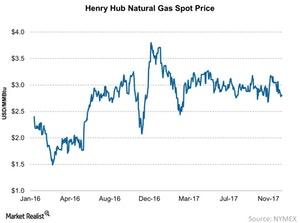
Nitrogen Fertilizer Input Cost: Natural Gas Prices Fell Last Week
For the week of December 6–13, 2017, natural gas spot prices at Henry Hub were broadly lower, according to the EIA.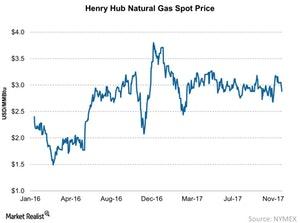
What’s the Natural Gas Price Forecast?
Henry Hub (MOO) natural gas prices saw a negative week-over-week trend, a continuation of the trend from the previous week.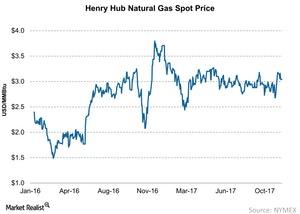
How Natural Gas Prices at Henry Hub Moved Last Week
Last week, the average weekly natural gas prices were broadly lower week-over-week at the Henry Hub in the US (MOO).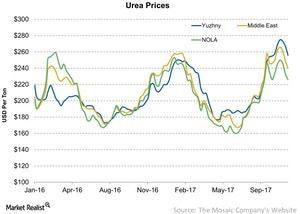
Urea Price Update for the Week Ending November 17
Last week, urea prices at the Yuzhny location fell as much as 4.1% week-over-week to $256 per metric ton from $267 per metric ton a week ago.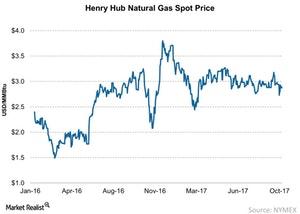
Nitrogen Input: Natural Gas Prices Fell Last Week
The natural gas prices at Henry Hub in the US fell 4.1% week-over-week from a weekly average of $2.96 per MMBtu to a weekly average of $2.84 per MMBtu.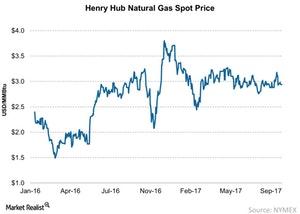
Nitrogen Input: How Natural Gas Prices Moved Last Week
So far this year, Henry Hub natural gas prices have hovered around $3 per MMBtu (million British thermal units).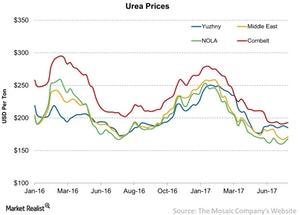
Granular Urea versus Prilled Urea Last Week
Last week, granular urea prices moved higher, which helped bring some relief to urea producers. But the falling global ammonia prices remained a challenge.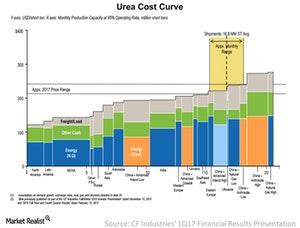
Understanding the Urea Cost Curve for CF Industries
Not only did CF Industries’ earnings fall year-over-year (or YoY) in 1Q17, its margins were also significantly lower YoY. To understand why, let’s dig deeper into the cost curve.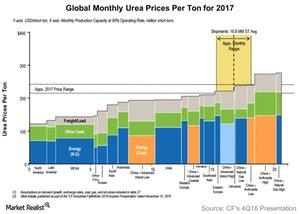
Urea Cost Curve Steepens: What It Means for CF Industries
Urea prices have fallen by an average of 14% annually over the past five years. The consistent fall has been due to falling energy costs, leading to lower production costs across the board.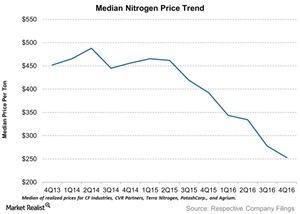
Nitrogen Producers’ Realized Prices: A Key Comparison
In 4Q16, the average price of ammonia for the five producers in our chart fell by an average of 38%.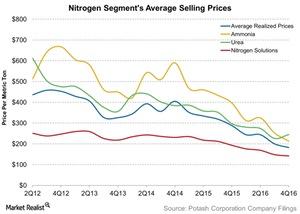
PotashCorp in 4Q16: Nitrogen Prices Added Salt to the Wound
In 4Q16, the overall average nitrogen selling price fell 37.0% to $182 per ton, from $288 per ton in 4Q15.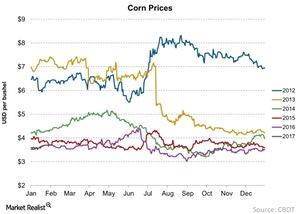
Why Corn Prices Moved Higher in January
Global corn prices are significantly lower than they’ve been for the past four years, considering the high global corn stock-to-use ratio last year.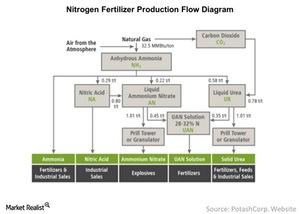
A Look at Nitrogen Fertilizer Cost Drivers and Production Flow
Energy as well as freight and handling can be the two biggest costs for nitrogen fertilizer production.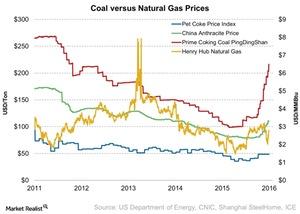
Rising Anthracite Prices Pressure Chinese Fertilizer Producers
Anthracite coal is used to produce nitrogen fertilizers. For the week ending November 18, average weekly anthracite coal prices in China rose 3.8%.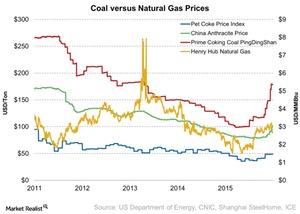
Fertilizer Update: Are Market Dynamics Changing?
Producers in China primarily use coal as an input material to produce nitrogen, especially urea-based fertilizers. China is the world’s biggest urea exporter.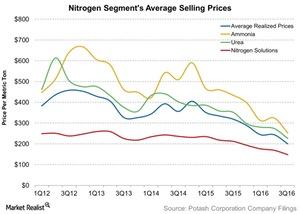
Why Did PotashCorp’s Nitrogen Prices Fall in 3Q16?
Nitrogen selling prices PotashCorp (POT) sells nitrogen fertilizers such as ammonia, urea, and nitrogen solutions. It competes with other natural gas–based nitrogen producers such as CF Industries (CF) and Terra Nitrogen (TNH), which primarily produce and sell nitrogen fertilizers. Agrium (AGU), which is a part of the PowerShares International Dividend Achievers ETF (PID), produces nitrogen fertilizers […]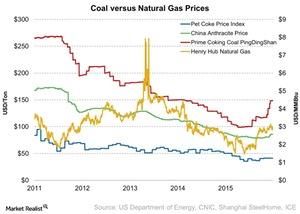
Coal Prices Remained Flat for the Week Ending October 7
Chinese producers primarily use coal to produce nitrogen, especially urea-based fertilizers, while producers in North America mostly rely on natural gas.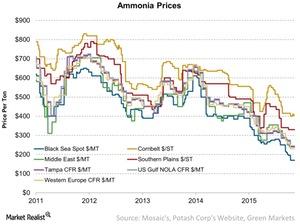
A Look at Ammonia Prices Last Week
The current levels of ammonia prices at several locations are below their comparative levels last year.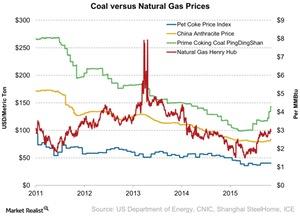
Urea Input: Anthracite Coal Prices Rose Last Week in China
Producers in China mainly use coal as an input material to produce nitrogen fertilizers, especially urea. China is impacted by price movements in coal.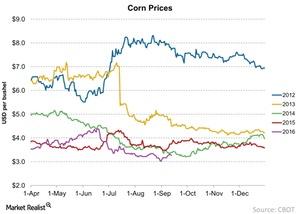
Why Corn Prices Are Still Declining in September
Corn prices on September 12 were 1.6% higher at $3.30 per bushel compared to $3.20 per bushel in August 2016.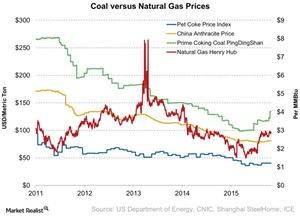
Weekly Nitrogen Update: Anthracite Prices Fell in China
For the week ending September 9, average weekly anthracite coal prices in China fell 4.2% to $81.1 per metric ton—compared to the previous week.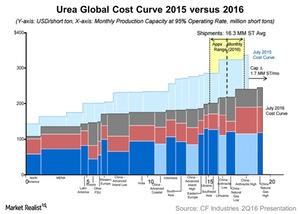
Why Nitrogen Prices Have Fallen So Hard this Year
The global nitrogen fertilizer capacity is abundant, allowing it to fulfill the current market requirements. This has put pressure on nitrogen prices, which fell significantly over the past year.
Pet Coke and Coal Prices Moved Sideways Last Week
While most North American producers use natural gas to produce nitrogen fertilizers, CVR Partners (UAN) mainly uses pet coke as a hydrogen source.
